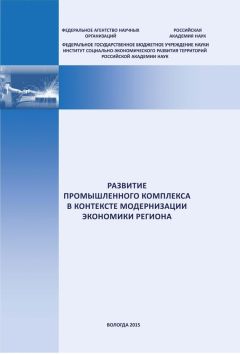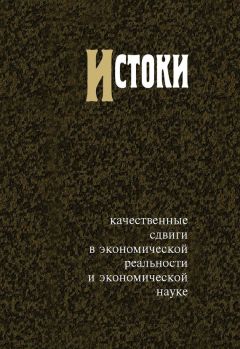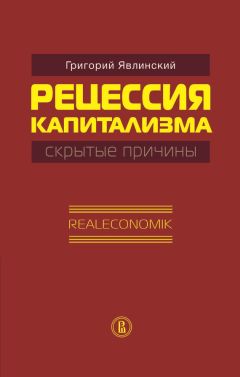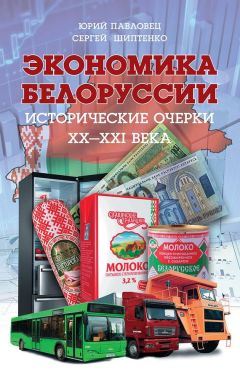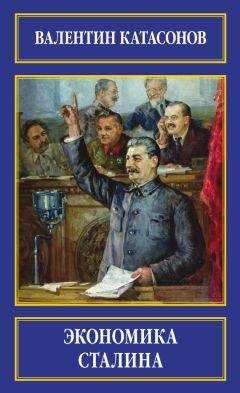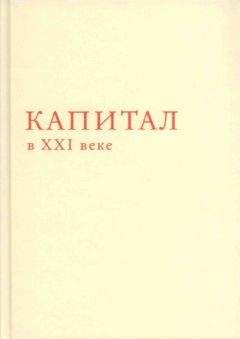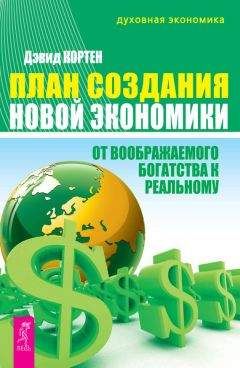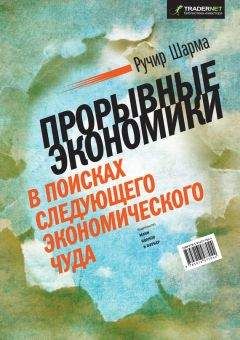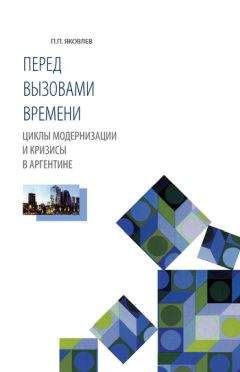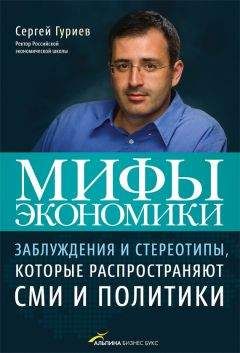Франк Трентманн - Эволюция потребления. Как спрос формирует предложение с XV века до наших дней

Все авторские права соблюдены. Напишите нам, если Вы не согласны.
Описание книги "Эволюция потребления. Как спрос формирует предложение с XV века до наших дней"
Описание и краткое содержание "Эволюция потребления. Как спрос формирует предложение с XV века до наших дней" читать бесплатно онлайн.
25
В Соединенном Королевстве в 2013 году на дома напрямую приходилось 17 % (77 мегатонн) всех выбросов CO2, что больше, чем от всего бизнес-сектора (16 %); бо́льшая часть – от отопления пространства и воды. «Напрямую», потому что государственная статистика рассматривает выбросы CO2 отдельно от сектора, поставляющего энергоресурсы (38 %); см. Department of Energy and Climate Change, 2013 UK Greenhouse Gas Emissions, etc., at: https:// www.gov.uk/government/uploads/system/uploads/attachment_data/file/295968/20140327_2013_UK_Greenhouse_Gas_Emissions_Provisional_Figures.pdf.
26
Тридцать пять экспертов высказывают свое мнение по разным регионам, периодам и темам: Oxford Handbook of the History of Consumption, ed. Trentmann.
27
Два коротких исключения при сравнительном анализе европейских стран: Heinz Gerhard Haupt, Konsum und Handel: Europa im 19. und 20. Jahrhundert (Göttingen, 2002); Marie-Emmanuelle Chessel, Histoire de la consommation (Paris, 2012).
28
Antonia Finnane, «Yangzhou’s «Mondernity»: Fashion and Consumption in the Early Nineteenth Century», Positions: East Asia Cultures Critique 11, no. 2, 2003: 395–425. Я благодарен Антонии Финнане за дискуссию. Мы также могли бы начать с рассказа об изобилии магазинов, моды и новинок в Японии конца XVII века: Ihara Saikaku, The Japanese Family Storehouse, or the Millionaires’ Gospel Modern-ized, trans. G. W. Sargent (Cambridge, 1688/1959).
29
Neil McKendrick et al, The Birth of a Consumer Society; Бродель назвал главу о недостатке моды в Китае «Когда общество стоит на месте» в: Civilization and Capitalism, 15th‐18th Century, I, 312.
30
Joan Thirsk, Economic Policy and Projects: The Development of a Consumer Society in Early Modern England (Oxford, 1978); Chandra Mukerji, From Graven Images: Patterns of Modern Material-ism (New York, 1983); John Goldthwaite, «The Empire of Things: Consumer Demand in Renaissance Italy», из: Patronage, Art and Society in Renaissance Italy, eds. Francis Kent & Patricia Simons (Oxford, 1987); Lisa Jardine, Worldly Goods: A New History of the Renaissance (London, 1997); Craig Clunas, Superfluous Things: Material Culture and Social Status in Early Modern China (Chicago, 1991); Christopher Dyer, An Age of Transition? Economy and Society in England in the Later Middle Ages (Oxford, 2005); а также Maryanne Kowaleski, «The Consumer Economy», из: Rosemary Horrox & W. M. Ormrod, A Social History of England, 1200–1500 (Cambridge, 2006), 238—59.
31
Ruth Barnes, Indian Block-printed Textiles in Egypt: The Newberry Collection in the Ashmolean Museum (Oxford, 1997).
32
В первой половине XVII века китайский сахар (сахарная пудра и кандированный сахар) всё чаще отправлялся в Европу, так как из-за конфликта между нидерландцами и португальцами возникли проблемы с поставками из Бразилии; в 1637 году свыше 4 миллионов фунтов китайского сахара было доставлено в Европу. Поставки в Амстердам прекратились в 1660-х, когда связь с Бразилией восстановилась, однако они продолжились в Персию и Японию. См. Sucheta Mazumdar, Sugar and Society in China: Peasants, Technology, and the World Market (Cambridge, MA, 1998), 83—7.
33
1,3 % в год в XVI веке, 0,7 % в XVII веке и 1,3 % в XVIII веке, по данным: K. H. O’Rourke & J. G. Williamson, «After Columbus: Explaining the Global Trade Boom: 1500–1800», Journal of Economic History 62, 2002: 417—56. Для деталей см.: Ronald Findlay & Kevin H. O’Rourke, Power and Plenty: Trade, War and the World Economy in the Second Millenium (Princeton, NJ, 2007), главы 4–5.
34
Angus Maddison, The World Economy: Historical Statistics (Paris, 2003), 260—3.
35
John E. Wills, «Maritime China from Wang Chih to Shih Lang: Themes in Peripheral History», в: From Ming to Ch’ing: Conquest, Reign and Continuity in Seventeenth-century China, eds. Jonathan Spence & John Wills (New Haven, CT, 1979), 201—28.
36
Antonio de Morga, Sucesos de las Islas Filipinas (1609) [History of the Philippine Islands], цитата со с. 405—8, available at: http://www. gutenberg.org/dirs/etext04/8phip10.txt.
37
William Atwell, «Ming China and the Emerging World Economy» в: Denis Twitchett & Frederick W. Mote, eds., Cambridge History of China, Vol 8: The Ming Dynasty, 1368—44, Part 2 (Cambridge, 1998), 388—92.
38
W. L. Idema, «Cannon, Clocks and Clever Monkeys», в: Development and Decline of Fukien Province in the 17th and 18th Centuries, ed. Eduard B. Vermeer (Leiden, 1990).
39
Jan De Vries & M. van der Woude, The First Modern Economy: Success, Failure and Perse-verance of the Dutch Economy, 1500–1815 (Cambridge, 1997), 437, таблица 10.4; F. S. Gaastra & J. R. Bruijn, «The Dutch East India Company», из: J. R. Bruijn & F. S. Gaastra, Ships, Sailors and Spices: East India Companies and Their Shipping in the 16th, 17th and 18th Centuries (Amsterdam, 1993), таблица 7.2, 182.
40
De Vries & Woude, First Modern Economy, 457—8.
41
Ralph Davis, English Overseas Trade, 1500–1700 (London, 1973).
42
Richard Ligon, A True & Exact History of the Island of Barbados (London, 1657), 40.
43
Phyllis Deane & William Alan Cole, British Economic Growth, 1688–1959 (Cambridge, 1962), 87; а также Ralph Davis, «English Foreign Trade, 1700—74», Economic History Review (2nd series) XV, 1962: 285–303.
44
Чтобы понять важность этого «чудо-продукта», см.: Sucheta Mazumdar, «China and the Global Atlantic: Sugar from the Age of Columbus to Pepsi—Coke and Ethanol», Food and Food-ways 16, no. 2, 2008: 135—47.
45
См. Richard Goldthwaite, The Economy of Renaissance Florence (Baltimore, MD, 2009); Robert S. DuPlessis, Transitions to Capitalism in Early Modern Europe (Cambridge, 1997); Harry A. Mis-kimin, The Economy of Later Renaissance Europe, 1460–1600 (Cambridge, 1977).
46
Patricia Fortini Brown, Private Lives in Renaissance Venice: Art, Architecture and the Family (New Haven, CT, 2004), 149 f.
47
См. Marta AjmarWollheim & Flora Dennis, eds., At Home in Renaissance Italy (London, 2006), в особенности главы «Tableware» («столовая посуда», автор Reino Liefkes) и «Sociability» («общение», автор Marta Ajmar-Wollheim), 254—66, 206—21.
48
Pietro Belmonte, Institutione della sposa (1587), quoted in Ajmar-Wollheim, «Sociability», in Ajmar-Wollheim & Dennis, eds., At Home in Renaissance Italy, 209.
49
Jacob Burckhardt, The Civilization of the Renaissance in Italy (New York, 1860/1958), 364 & 369—70.
50
Ajmar-Wollheim & Dennis, eds., At Home in Renaissance Italy; а также: Jardine, Worldly Goods.
51
Norbert Elias, The Civilizing Process (Oxford, 1939/1994).
52
Ajmar-Wollheim & Dennis, eds., At Home in Renaissance Italy.
53
Paula Hohti, «The Innkeeper’s Goods: The Use and Acquisition of Household Property in Sixteenth-century Siena», в: Michelle O’Malley & Evelyn Welch, eds., The Material Renaissance (Manchester, 2007), 242—59.
54
Перечень можно найти тут: «L’interno della casa dell’artigiano, e dell’artista nella Venezia del cinquecento», Studi Veneziani (new series) 8, 1984: 126—8
55
Goldthwaite, The Economy of Renaissance Florence, 381.
56
Brown, Private Lives in Renaissance Venice, 173—82.
57
Gasparo Segizzi, умер 1576; см.: Palumbo Fossati, 109—53, особенно 138—45.
58
Goldthwaite, The Economy of Renaissance Florence, 384.
59
Bruno Blondé, «Tableware and Changing Consumer Patterns: Dynamics of Material Culture in Antwerp, 17th—18th Centuries», в: Majolica and Glass from Italy to Antwerp and Beyond, ed. Johan Veeckman (Antwerp, 2002).
60
Jardine, Worldly Goods, 33—4.
61
Goldthwaite, «The Empire of Things».
62
Этот консерватизм был подмечен современниками, такими как Варки Бенедетто, см.: Paolo Malanima, Il lusso dei contadini: consumi e industrie nelle campagne toscane del sei e settecento (Bologna, 1990), 24.
63
Robert C. Davis, Shipbuilders of the Venetian Arsenal (Baltimore, MD, 1991), 100.
64
Elizabeth Currie, «Textiles and Clothing»: Ajmar Wollheim & Dennis, eds., At Home in Renaissance Italy, 349.
65
Evelyn Welch, Shopping in the Renaissance: Consumer Cultures in Italy, 1400–1600 (New Haven, CT, 2005), цитата на с. 234.
66
Welch, Shopping in the Renaissance, 68–72; Гарцони (Garzoni) цитируется на с. 68.
67
Plato, The Republic, Book II, «The Luxurious State» (372—37CE), trans. R. E. Allen (New Haven, CT, 2006), 55—6. См. также: Christopher Berry, The Idea of Luxury (Cambridge, 1994); William Howard Adams, On Luxury: A Cautionary Tale (Washington, DC, 2012, 1st edn).
68
Matthew 6:19–21 (King James Bible). См. также: The Works of Aurelius Augustine, The City of God (Edinburgh, 1871).
69
Patricia Allerston, «Consuming Problems: Worldly Goods in Renaissance Venice» из: O’Malley & Welch, eds., The Material Renaissance, 22.
70
1564, цитата в: O’Malley & Welch, eds., The Material Renaissance, 19.
71
Vincent Cronin, The Florentine Renaissance (London, 1972), 288f.
72
This paragraph draws on Patricia Fortini Brown, «Behind the Walls: The Material Culture of Venetian Elites» из: John Martin & Dennis Romano, Venice Reconsidered: The History and Civilization of an Italian City-state, 1297–1797 (Baltimore, MD, 2000), цитата на 324 & 326.
73
Paola Pavanini, «Abitazioni popolari e borghesi nella Venezia cinquecentesca», Studi Veneziani (new series) 5, 1981: 63—126, особенно 111—12, 125—6.
74
Ulinka Rublack, «Matter in the Material Renaissance», Past & Present 219, 2013: 41–84.
75
Kent Roberts Greenfield, Sumptuary Law in Nürnberg: A Study in Paternal Government (Baltimore, MD, 1918), 109.
76
Greenfield, Sumptuary Law in Nürnberg.
77
Sheilagh Ogilvie, «Consumption, Social Capital and the «Industrious Revolution» in Early Modern Germany», Journal of Economic History 70, no. 2, 2010: 287–325, 305.
78
24 Hen. VIII. C. 13 (1532—3), из: Statutes of the Realm, Vol. III: 1509—45 (London, 1817), eds. T. E. Tomlins & W. E. Taunton, цитата со с. 430.
79
Frances Elizabeth Baldwin, Sumptuary Legislation and Personal Regulation in England (Baltimore, MD, 1926), 231f.
80
Greenfield, Sumptuary Law, 109, 128—30.
81
Madeline Zilfi, «Goods in the Mahalle»: Consumption Studies and the History of the Ottoman Empire, 1550–1922, ed. D. Quataert (New York, 2000).
82
Roy Porter, «Consumption: Disease of the Consumer Society?»: John Brewer & Roy Porter, eds., Consumption and the World of Goods (London & New York, 1993), 58–81; Dominik Schrage, Die Verfügbarkeit der Dinge: Eine historische Soziologie des Konsums (Frankfurt am Main, 2009), 43–51; Frank Trentmann, «The Modern Genealogy of the Consumer: Meanings, Identities and Political Synapses»: Consuming Cultures, Global Perspectives: Historical Trajectories, Transnational Exchanges, eds. John Brewer & Frank Trentmann, (Oxford & New York, 2006), 19–69.
Подписывайтесь на наши страницы в социальных сетях.
Будьте в курсе последних книжных новинок, комментируйте, обсуждайте. Мы ждём Вас!
Похожие книги на "Эволюция потребления. Как спрос формирует предложение с XV века до наших дней"
Книги похожие на "Эволюция потребления. Как спрос формирует предложение с XV века до наших дней" читать онлайн или скачать бесплатно полные версии.
Мы рекомендуем Вам зарегистрироваться либо войти на сайт под своим именем.
Отзывы о "Франк Трентманн - Эволюция потребления. Как спрос формирует предложение с XV века до наших дней"
Отзывы читателей о книге "Эволюция потребления. Как спрос формирует предложение с XV века до наших дней", комментарии и мнения людей о произведении.








